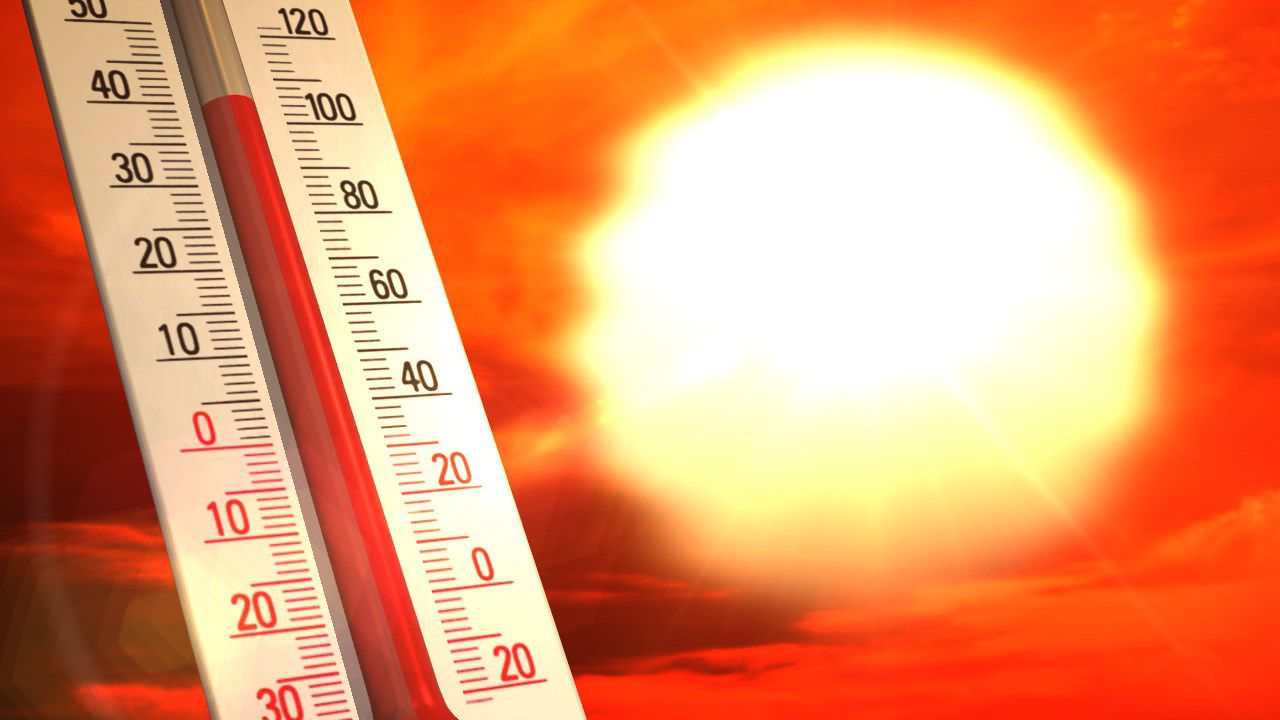WARI SECONDARY SCHOOL
PHYSICS HEAT SERIES 1
Time: 2:00hrs
INSTRUCTIONS
- This paper consists of five (5) questions
- Answer all questions
Question 1: Thermal Conductivity and Heat Transfer
(a)(i) Coefficient of Thermal Conductivity
Definition: The quantity of heat (Q) transmitted through a unit thickness (L) of a material in a direction normal to a surface of unit area (A) due to a unit temperature gradient (ΔT) under steady state conditions.
Mathematically: k = QL/(AΔT)
Units: W/m·K or Js⁻¹m⁻¹·°C⁻¹
Units: W/m·K or Js⁻¹m⁻¹·°C⁻¹
(a)(ii) Blanket Thermal Properties
A blanket works both ways because:
- It contains air pockets that are poor thermal conductors (kair ≈ 0.024 W/m·K)
- The trapped air reduces both heat transfer into and out of the insulated space
- For humans: Reduces heat loss to environment (keeps warm)
- For ice: Reduces heat gain from environment (prevents melting)
(b) Ice Melting Rate in Wooden Box
Given:
Box thickness (L) = 2 cm = 0.02 m
Internal dimensions = 60×60×60 cm ⇒ Surface area (A) = 6×(0.6)² = 2.16 m²
ΔT = 27°C - 0°C = 27°C
k = 0.1674 Js⁻¹m⁻¹·°C⁻¹
Lf = 336×10³ J/kg
Heat flow rate (Q/t) = kAΔT/L
= (0.1674)(2.16)(27)/0.02 ≈ 488.3 J/s
Melting rate = (Q/t)/Lf = 488.3/336000 ≈ 0.00145 kg/s ≈ 5.23 kg/hour
Box thickness (L) = 2 cm = 0.02 m
Internal dimensions = 60×60×60 cm ⇒ Surface area (A) = 6×(0.6)² = 2.16 m²
ΔT = 27°C - 0°C = 27°C
k = 0.1674 Js⁻¹m⁻¹·°C⁻¹
Lf = 336×10³ J/kg
Heat flow rate (Q/t) = kAΔT/L
= (0.1674)(2.16)(27)/0.02 ≈ 488.3 J/s
Melting rate = (Q/t)/Lf = 488.3/336000 ≈ 0.00145 kg/s ≈ 5.23 kg/hour
(c) Y-Shaped Rod System
(i) Junction Temperature:
Let T be junction temperature
Heat current balance: QCu = QBr + QSt
(kAΔT/L)Cu = (kAΔT/L)Br + (kAΔT/L)St
(385)(100-T)/0.13 = (109)(T-0)/0.18 + (50.2)(T-0)/0.24
Solving gives T ≈ 68.3°C
Heat current balance: QCu = QBr + QSt
(kAΔT/L)Cu = (kAΔT/L)Br + (kAΔT/L)St
(385)(100-T)/0.13 = (109)(T-0)/0.18 + (50.2)(T-0)/0.24
Solving gives T ≈ 68.3°C
(ii) Heat Currents:
QCu = (385)(2×10⁻⁴)(100-68.3)/0.13 ≈ 18.8 W
QBr = (109)(2×10⁻⁴)(68.3-0)/0.18 ≈ 8.3 W
QSt = (50.2)(2×10⁻⁴)(68.3-0)/0.24 ≈ 10.5 W
Verification: 8.3 + 10.5 ≈ 18.8 W (balances)
QBr = (109)(2×10⁻⁴)(68.3-0)/0.18 ≈ 8.3 W
QSt = (50.2)(2×10⁻⁴)(68.3-0)/0.24 ≈ 10.5 W
Verification: 8.3 + 10.5 ≈ 18.8 W (balances)
Question 2: Thermal Applications
(a)(i) Bird Feathers in Winter
Birds swell their feathers to:
- Traps more insulating air (kair ≈ 0.024 W/m·K)
- Creates thicker boundary layer reducing convective heat loss
- Increases effective insulation thickness (L in Q = kAΔT/L)
(a)(ii) Copper-Bottom Pans
Copper bottoms are preferred because:
- High thermal conductivity (kCu = 385 W/m·K vs ksteel ≈ 15 W/m·K)
- Ensures even heat distribution across cooking surface
- Reduces hot spots that can burn food
- Quick response to temperature changes
(b) Ice Box Heat Flow
Given:
A = 1.2 m², L = 2 cm = 0.02 m
k = 0.01 Jm⁻¹s⁻¹·°C⁻¹
ΔT = 35°C - 0°C = 35°C
Lf = 3.35×10⁵ J/kg
Heat flow rate (Q/t) = kAΔT/L
= (0.01)(1.2)(35)/0.02 = 21 J/s
Daily ice melt = (21 J/s × 86400 s/day)/3.35×10⁵ J/kg ≈ 5.42 kg/day
A = 1.2 m², L = 2 cm = 0.02 m
k = 0.01 Jm⁻¹s⁻¹·°C⁻¹
ΔT = 35°C - 0°C = 35°C
Lf = 3.35×10⁵ J/kg
Heat flow rate (Q/t) = kAΔT/L
= (0.01)(1.2)(35)/0.02 = 21 J/s
Daily ice melt = (21 J/s × 86400 s/day)/3.35×10⁵ J/kg ≈ 5.42 kg/day
(c) Temperature Gradient
Given:
Gradient = 80°C/m, Length = 0.5 m
Total ΔT = 80 × 0.5 = 40°C
Hot end = 30°C ⇒ Cold end = 30 - 40 = -10°C
Gradient = 80°C/m, Length = 0.5 m
Total ΔT = 80 × 0.5 = 40°C
Hot end = 30°C ⇒ Cold end = 30 - 40 = -10°C
Question 5: Thermal Radiation
(a)(i) Reflectivity and Emission
Good reflectors are poor emitters because:
- Kirchhoff's Law: High reflectivity (low absorptivity) implies low emissivity (ε)
- Reflective surfaces have fewer surface imperfections to emit radiation
- Photon interactions are primarily elastic (reflection) rather than inelastic (absorption/emission)
(b) Black Body Radiation
Given:
Initial: r = 12 cm, P = 45 W, T = 500 K
New: r' = 6 cm, T' = 1000 K
Power P = σAεT⁴ (ε=1 for black body)
P ∝ r²T⁴ ⇒ P'/P = (r'/r)²(T'/T)⁴ = (0.5)²(2)⁴ = 0.25×16 = 4
P' = 4×45 = 180 W
Initial: r = 12 cm, P = 45 W, T = 500 K
New: r' = 6 cm, T' = 1000 K
Power P = σAεT⁴ (ε=1 for black body)
P ∝ r²T⁴ ⇒ P'/P = (r'/r)²(T'/T)⁴ = (0.5)²(2)⁴ = 0.25×16 = 4
P' = 4×45 = 180 W
(c) Filament Temperature
Given:
P = 100 W, A = 1 cm² = 10⁻⁴ m²
σ = 5.67×10⁻⁸ Wm⁻²K⁻⁴
P = σAT⁴ ⇒ T = (P/σA)^¼
= (100/(5.67×10⁻⁸×10⁻⁴))^¼ ≈ (1.764×10¹³)^¼ ≈ 2050 K
P = 100 W, A = 1 cm² = 10⁻⁴ m²
σ = 5.67×10⁻⁸ Wm⁻²K⁻⁴
P = σAT⁴ ⇒ T = (P/σA)^¼
= (100/(5.67×10⁻⁸×10⁻⁴))^¼ ≈ (1.764×10¹³)^¼ ≈ 2050 K


No comments
Post a Comment